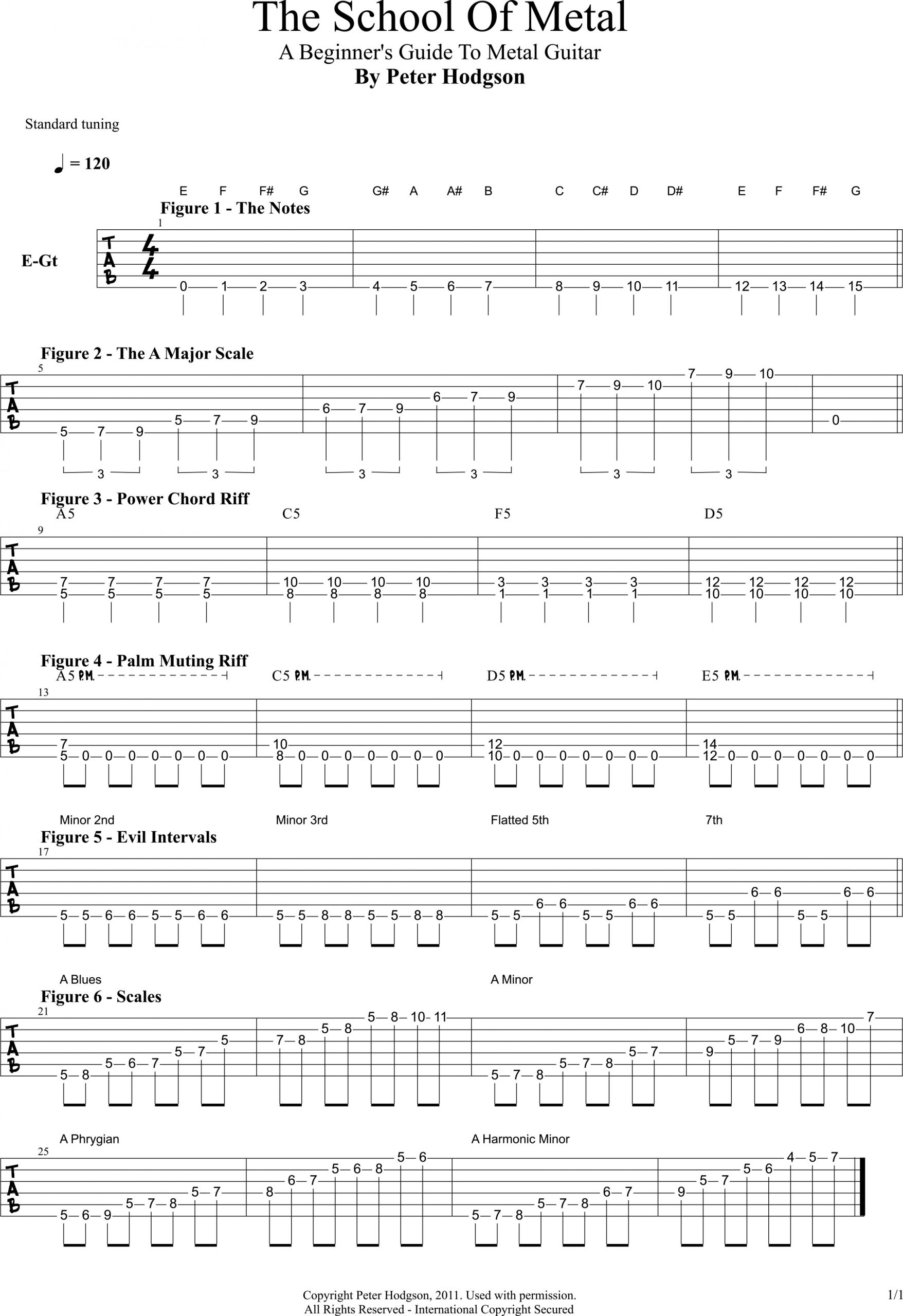The Power Chord
The most fundamental element of metal guitar is the power chord. It’s pretty simple to play and to move around the neck, which means you can make some pretty listenable music very soon after learning it. The Power Chord is typically played with its lowest note on either the bottom string (E) or the next one up from that (A). It’s an easy shape to remember too. Observe. The only exception is if you play a power chord that contains an open (unfretted) string as its lowest note. Then you only need to fret the higher note.
Before we go any further, a quick music theory lesson. Figure 1 is the name of all the notes on the lowest string, and Figure 2 is the major scale. In this case we’ll learn the scale in the key of A because it’s easier to play there, but you can move this shape anywhere on the neck and whichever note is the lowest, that’s the key you’re playing in. Start the pattern at the third fret and you’re playing in the key of G. Start at the 10th and you’re in D. It’s that easy.
Power Chord Riffage
Okay. Figure 3 is a simple power chord riff designed to sound suitably metal. It uses both open and fully-fretted power chords starting on both the E and A strings. It’s quite easy to play, since each chord is the same exact shape, just played at a different point on the neck. The chord names (A5, C5, F5, D5) are included so you can see how they relate to the notes from Figure 1.
Palm Muting
Now that we know what to play, let’s look at how to play it. One reason that metal sounds so punchy and heavy is the palm mute. This is where you use the edge of your palm to partially deaden the note, cutting off its decay while simultaneously putting more impact on its attack. Figure 4 is a riff which combines power chords and palm-muted low notes.
Metal Scales
Here are some handy scales to use as the blueprint for writing metal riffs and solos. Some scales sound intrinsically happy. Some sound downright evil. Learn as many of them as you can. Learning a new scale can unlock a whole world of musical exploration, and as long as you stick within the scale you can usually randomly play a few different notes and find a way to make them all fit together. Each of these scales are presented in the key of A, and although there are plenty more, these are the most brutal and metalworthy. The most important thing to remember is that scales aren’t just some lame practice thing to be rehearsed up and down. They’re particular families of notes that work well together and create their own moods.







